Boss’ nightmare or new work perk? We tried no working hours for 2 weeks, here’s our verdict.
We went two weeks with no working hours to find out whether it's the next big work perk. Here's what happened, and what we learnt.

From gym memberships to mental health days, there have been many trendy work perks that have come up over the years in an effort to improve employee morale and welfare.
One popular benefit is flexible work hours, which has long been a thing. But how about this: no working hours.
Of course, we don’t mean zero hours of working. We mean, no set hours. Instead of having a time-based work schedule where you have to clock in for a specific number of hours and then clock out, we would work in more of a task-based and “on-call” manner.
This is exactly what Choobub Creatives has been doing. Earlier this year, Vulcan Post interviewed the creative agency about the creative agency and how it had no regular working hours or leave system. Rather, employees are expected to just work as they please.
For two weeks in August, the Vulcan Post team got the opportunity to try the system ourselves.
Game plan
The concept is rather straightforward: work from anywhere, anytime.
Want to work out of state? Sure! At the office? Of course! Want to take a couple hours off during your day to get your hair done? Go ahead. Want to stick to your regular routine and change nothing? It’s completely up to you.
But just so that the teams didn’t completely fall into a state of anarchy, there were a few things we maintained from our regular work routines:
Sending our task lists daily to the relevant team chats Keeping our shared work calendars updated with work-related events The timing of weekly meetings Staying responsive in chat and reachable via calls for urgent mattersBasically, the point is to be responsible and accountable during the two weeks—which shouldn’t be a problem, since those are values we embody all the time, right?
Expectations
Going into this, each of us had our own hypotheses of how the two weeks would go. They included:
Expectation #1: We would have more flexibility to commute to work events, run personal errands or even enjoy longer lunches, without fear of it eating into fixed working hours.
Expectation #2: Those who opted to work from home would be more productive as it cuts out the time spent commuting.
Expectation #3: Productivity may be maintained work-wise, but we could be more productive in our personal lives. There would be more time to spend on tasks involving wellness, fitness, and personal chores. Having the gym to myself during regular working hours sounded like a fantastic idea.
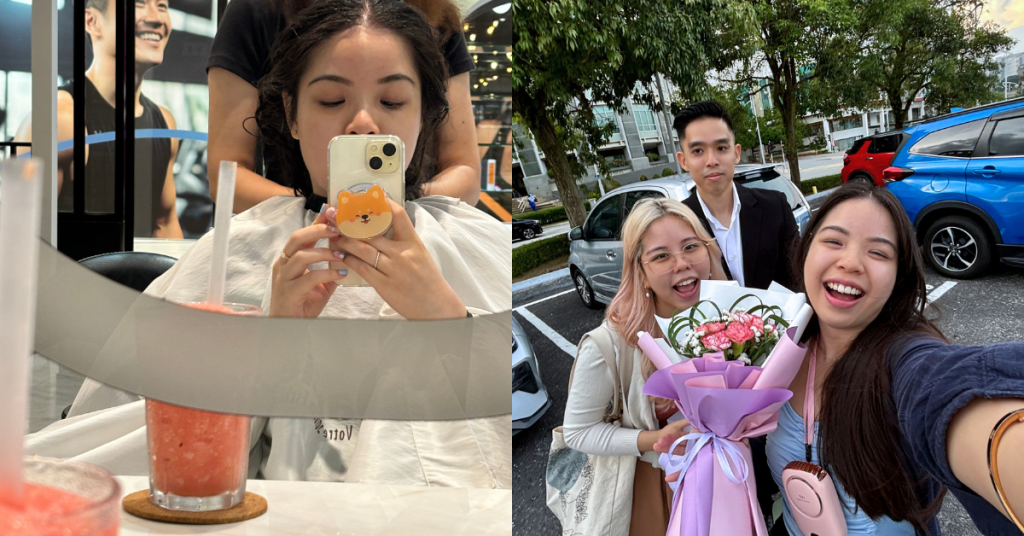 Joyce, our content marketing manager, went to get a haircut and also attended her brother’s ROM during our typical working hours
Joyce, our content marketing manager, went to get a haircut and also attended her brother’s ROM during our typical working hoursThings were a little different from the management’s perspective.
Expectation #5: For Sarah, our managing director, the increased flexibility would result in happier employees, which in turn would lead to more productivity.
At the bare minimum, the team would be able to maintain the expected output, but the ideal situation would be to achieve a higher output. In our team’s context, output and productivity are mainly measured in terms of articles published, written, as well as content views.
Reality and realisations
With different expectations, each of us naturally approached the two weeks differently. Some of us maintained as much of our regular schedules as possible, while others started from an empty slate, choosing to work based on how they felt on the day without much of a structured schedule.
Personally, I took advantage of the two weeks to work from, well, anywhere. I spent a few days at home, a couple in the office, some days at a friend’s, and the rest out and about. The editorial team even spent a day cafe-hopping around the Jalan Tun H.S. Lee area.
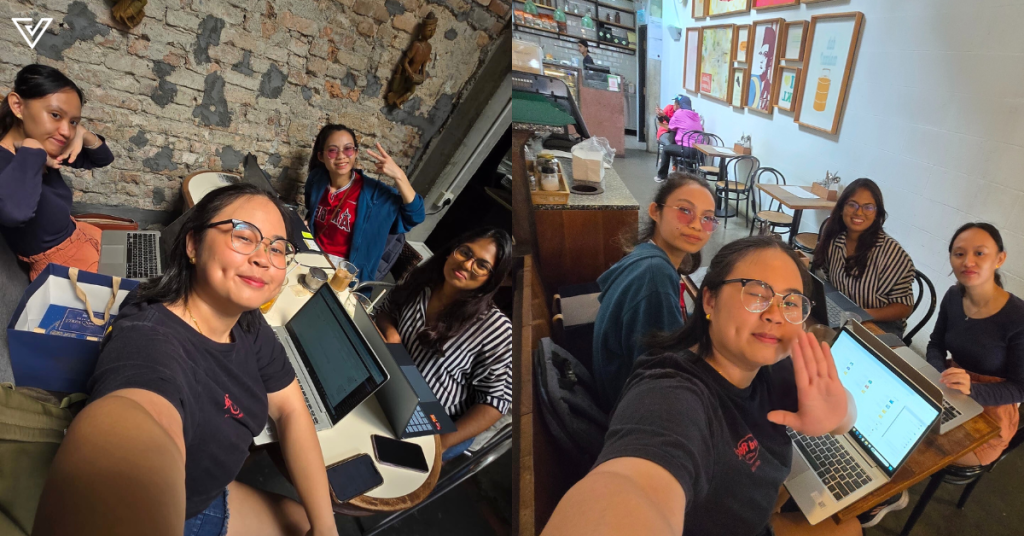 We visited four spots during our cafe-hopping trip—a success!
We visited four spots during our cafe-hopping trip—a success!This experience quickly showed me how expensive the romanticised life of being a digital nomad could be. I finally understand why people may go to a coworking space instead of a cafe…
For my editor Sade, she realised that you could end up feeling “busier” but that feeling doesn’t necessarily reflect the real amount of work done.
 Sade’s two weeks included working in a bookstore, working in Genting Highlands, as well as getting her hair done in Kuching
Sade’s two weeks included working in a bookstore, working in Genting Highlands, as well as getting her hair done in Kuching“It’s simply because you’re non-stop on the go, moving from place to place while still trying to get work done in pockets of time,” she said.
Sade actually flew back to her hometown of Kuching for the second week. While it was nice to be around family, she learnt that they can occasionally be a source of distraction, as they might not understand you’re not on holiday or leave just because you’re working remotely.
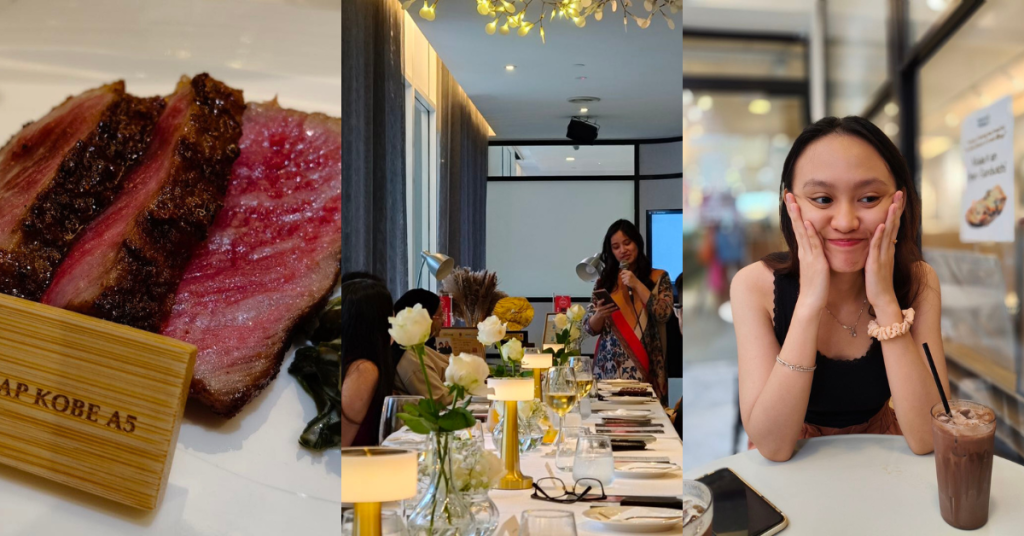 Sabrina, our writer and digital marketing executive, was working on more of a day-by-day basis, and also attended an event where she tasted kobe beef for the first time
Sabrina, our writer and digital marketing executive, was working on more of a day-by-day basis, and also attended an event where she tasted kobe beef for the first timeStruggling with discipline seemed to be a common issue too. Our editorial writer, Shathana, said, “There’s no set time to do your work, so you can end up either using it wisely or slacking on your productivity.”
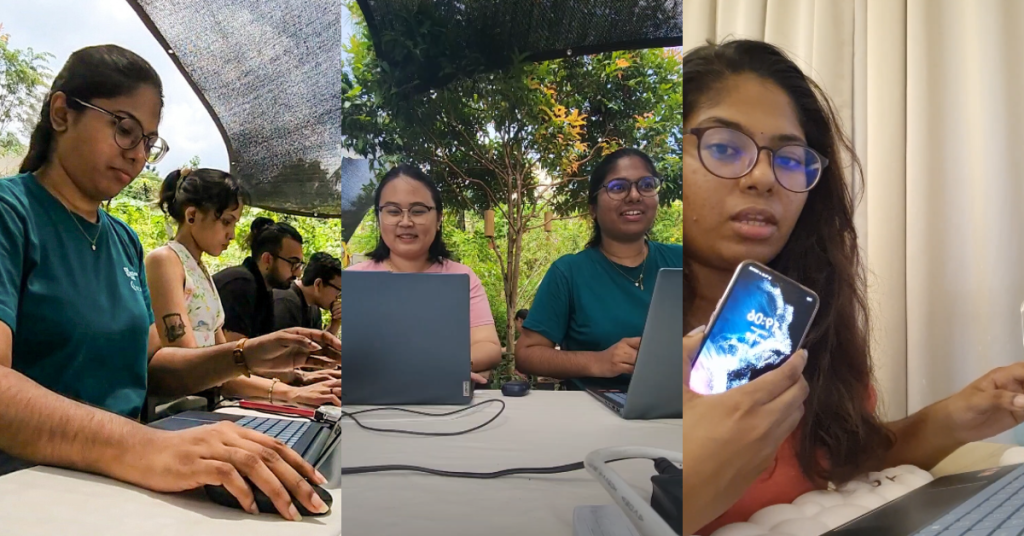 Shathana primarily worked from home, but joined some coworking outings too
Shathana primarily worked from home, but joined some coworking outings tooSimilarly, given that there was no strict clock-out time, some people also found it harder to create boundaries, which might make it harder to stop working at a reasonable time, too.
I learnt that mixing business and pleasure is challenging too. Going out to work, especially with friends or even your team members, might make you have the mindset of “this is a hangout” rather than “this is work”.
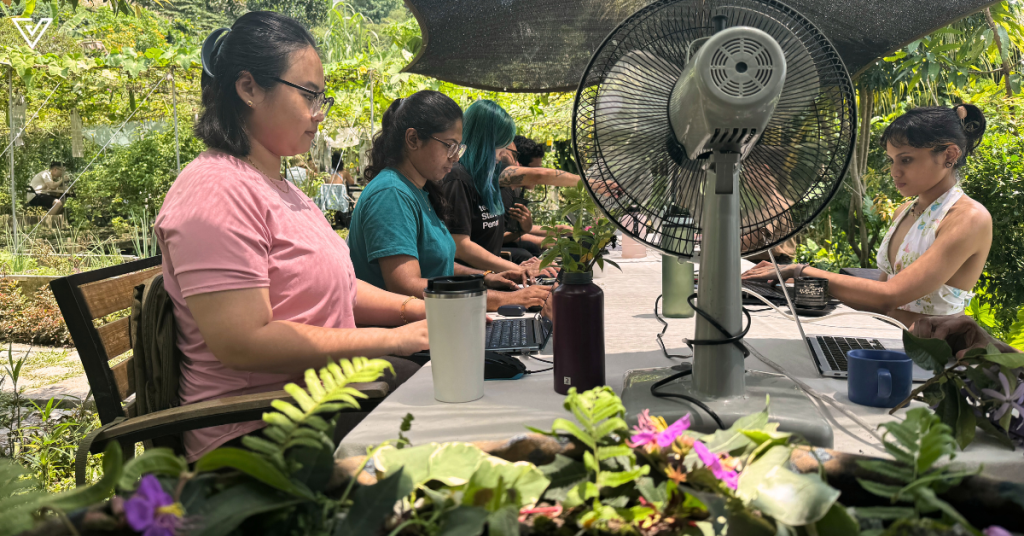 We even went coworking in a garden
We even went coworking in a gardenAnd remember what I said about wanting to work on fitness? It didn’t quite happen the way I expected it to. Not to make excuses, but I inadvertently packed my week full of other exciting activities including work-related events as well as meet-ups with old friends.
All that said, it wasn’t like the experiment didn’t have its positives. Far from that.
“I felt like not having the working hours reduces the ‘stress’ of travel, definitely more relaxed going into work with a better mindset,” Rikco, our business development executive said.
Joyce said, “I enjoyed being trusted to hold myself accountable for my work, while having the space and time to manage things in my personal life on weekdays, which is when banks, medical services, etc. are open and expecting customers.”
And thankfully, everyone was quite responsive for the most part, and would inform if they were going to be fully inactive. There were some impromptu calls that happened, but even then, everyone quickly responded. I did feel like people were slower to respond than usual for non-urgent messages, but never took more than, say, an hour.
That reliability made all the difference.
In retrospect
Talking to all the team members about their experience, I deduced that the people who mostly kept to their schedules enjoyed the two weeks a lot better.
One big lesson for some of us is not to rely on feelings to set the tone for your day. You’ll still need to plan your day and work, especially if you know you lack discipline or accountability.
“I think I wasn’t as disciplined compared to normal working hours, because sometimes I’ll procrastinate, comforted by ‘I can work tonight’,” Fadhilah, our video editor, said.
Like Fad, I myself was reminded of the importance of setting realistic goals for the day. Flexible working hours don’t magically grant you more hours in a day.
For our managing director Sarah, though, the silence in the chats felt uncomfortable. Usually, there are more jokes, memes, or just some kind of activity being shared around in the chats, perhaps inspired by our IRL conversations, too.
She added that she felt “FOMO” (the fear of missing out) more so than usual, perhaps from all the impromptu events and meet-ups that happened during the two weeks.
In terms of productivity, the output was not bad, but did not impress. In short, we were able to maintain our usual level of productivity, though there were some “questionable gaps” that might signify a lack of initiative.
Verdict
So, does it work?
Not to give a cop-out answer, but it really depends. It depends on the discipline that team members have, and how much trust there is between the team and the management.
As Sarah said, it only really, really works if you fully trust your team. Even if there is a lack of trust for a specific person, it wouldn’t work.
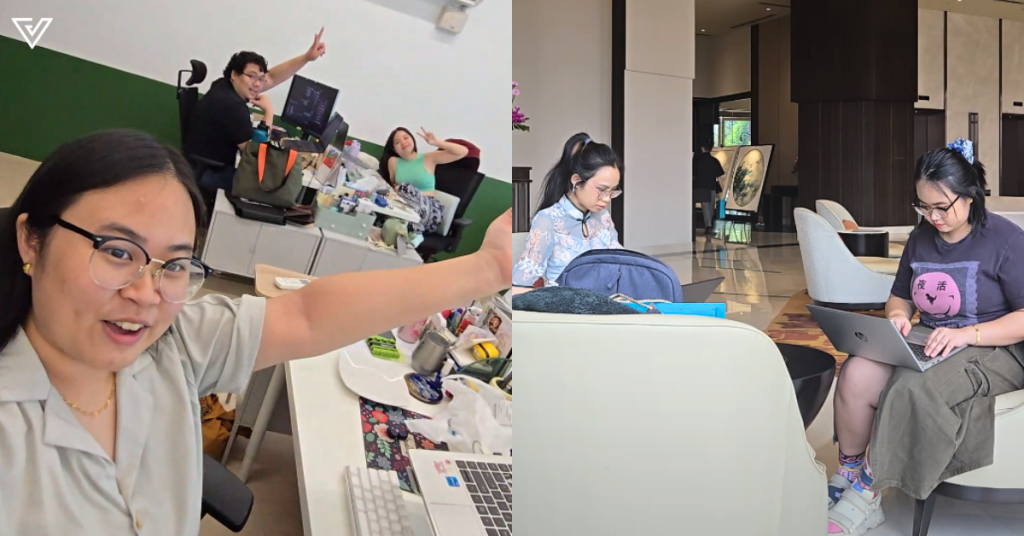 Some of us met up in the office as well as worked during events together
Some of us met up in the office as well as worked during events togetherThe system was also harder for those of us who were team-based and hence had to rely a lot on one another, compared to people who worked more individualistically.
Ultimately, it doesn’t have to be an all-or-nothing thing where you go between extremes of having a strict 9-to-5 schedule, or a fully no-working-hours system. There’s no rulebook on having to choose one or the other, or specific guidelines you must adhere to.
Rather, each company has its own culture and dynamics, so just pick and choose elements of flexibility and blend them together to make it uniquely yours.
Is this something we would do again? Sarah says definitely possible, but with different ground rules. The frequency may be different too. Perhaps we would implement it only once or twice a month, sandwiched between weeks where we stick to our regular hours.

Basically, it would be more of a hybrid situation. That way, employees can enjoy the benefits, but it’s not so extreme that it’s hard to manage their time and subsequently stress over time management.
It’s important to recognise that we only tried this out for two weeks. If carried out in the long run, it could’ve had a bigger impact on our productivity, for better or worse.
So, to answer the question of whether it may be the next big work perk: probably not. For bigger companies, especially, it would be hard to ensure everyone is staying accountable.
But for specific types of teams, team members, and industries, why not try it out? Give it two weeks, and maybe you’ll find a whole new work routine that supercharges your productivity.
Read other opinion articles we’ve written here.
 ValVades
ValVades 































